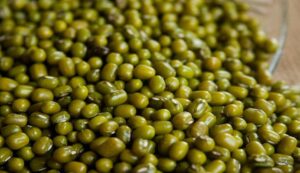Cultivation of Moong Dal: Farmers will become millionaires by cultivating this pulse, know how to cultivate it
Cultivation of Moong Dal: Growing pulses is making many farmers wealthy. It is possible to realize the ambition of making enormous earnings from farming. The import of pulses is rising annually as a result of a decline in output. Moong dal is also becoming more and more popular. The farmer may benefit more from its cultivation in the meantime. assuming that cultivation is carried out properly. Keep an eye on agriculture, and don’t be afraid to seek advice from an expert if a problem comes up.

Cultivating Moong Dal Benefits Farmers
Moong production is now more advantageous for farmers, according to Prof. Ashok Kumar Singh, Head of the Department of Soil Science and Agricultural Chemistry at Shri Murli Manohar Town Postgraduate College Ballia. This agriculture should have an irrigation system. It doesn’t take much fertilizer to grow moong.
The Crop will be Ready in a Few Days
Agricultural University Faizabad is the source of the first moong species, “Narendra Moong-01,” whereas BHU is the source of the second, “Malviya Jagriti.” For both of them, there is no solution. In around 65 to 70 days, this crop will be ready.
This is the Proper Method for Planting
One bigha of land requires four to four and a half kg of seeds. Prior to planting, make sure the land is sufficiently wet by plowing it. Sow the seed 5 to 6 cm deep after treating it with rhizobium culture. When seeds are treated before being sown, a bumper harvest is achieved. In its cultivation, phenol phos may be utilized to avoid illnesses.
How much Fertilizer Should be Used?
More phosphorus-containing fertilizers need to be used. In one bigha, use around 15 kg of phosphate, 10 kg of potash, and 8 to 10 kg of sulfur. Five kilograms of nitrogen are needed in the first several days. Remember that 15 days prior to the crop ripening, irrigation should be discontinued.
One bigha may yield between 10 to 14 quintals of moong with the right care. In addition to this, it yields green biomass.

